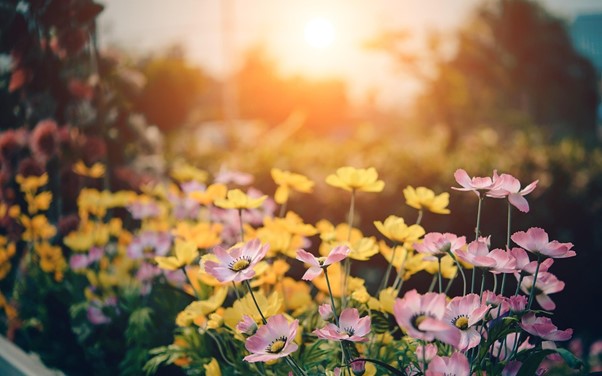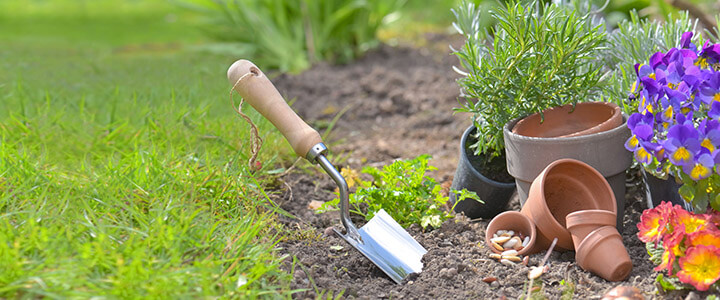How To Create an Eco-Friendly Back Garden on Campus
Creating an eco-friendly back garden on campus is more than just planting seeds; it’s about embracing sustainability and nurturing our environment. Such gardens offer a green oasis in academic settings, providing a serene retreat for students. They serve as living laboratories for learning about ecological practices, while contributing positively to campus biodiversity. Importantly, these gardens can become a collaborative space, promoting environmental awareness and fostering a sense of community.
Their benefits extend beyond aesthetics, playing a crucial role in educating students about sustainable living and environmental responsibility.

Understanding the Basics of Eco-Friendly Gardening
Eco-friendly gardening revolves around practices that support the environment, rather than harm it. It’s all about choosing methods that encourage a natural balance. This means using resources thoughtfully and reducing waste. For instance, instead of chemical fertilizers, you use organic compost. It’s about nurturing plants that require less water, thus conserving this vital resource.
Embracing these sustainable practices in gardening is crucial. It’s not just for the health of your garden, but for the planet too. By adopting eco-friendly methods, you reduce your carbon footprint and support biodiversity. And while best experts will do my essay at Essaypro, you can dedicate some time to gardening, knowing you’re contributing positively to the environment. This approach to gardening is a small step towards a more sustainable future, and every action counts.
Choosing the Right Location
Selecting the right spot for your garden is a key step. First, look for an area with ample sunlight; most plants thrive with about 6-8 hours of direct sun daily. However, if your chosen plants prefer shade, find a spot that meets this need.
Next, consider soil quality. Rich, well-drained soil is ideal for most gardens. If the campus soil isn’t great, consider raised beds or container gardening. Lastly, think about water access. Your garden should be near a water source for easy watering. Remember, a good location can make a big difference in your garden’s success.
Selecting Plants and Materials
Choosing the right plants is essential for an eco-friendly garden. Opt for native and drought-resistant species, as they’re well-adapted to the local climate and require less water and maintenance. These plants also support local wildlife, like bees and birds.
When it comes to materials, think green. Use recycled or sustainable items wherever possible. This could mean repurposing old containers as plant pots or using biodegradable planters. By choosing environmentally friendly materials, you’re not just building a garden; you’re actively reducing waste and promoting sustainability. Remember, every choice you make in your garden can have a positive impact on the environment.
Water Conservation Strategies
Water conservation is vital in eco-friendly gardening. One effective method is rainwater harvesting. By collecting and storing rainwater, you can reduce reliance on tap water and use this natural resource for your garden. Setting up rain barrels is a simple way to start.
Drip irrigation is another efficient technique. It delivers water directly to the roots of plants, minimizing wastage. Compared to traditional watering methods, it’s more targeted and conserves water. Additionally, mulching is beneficial. Munching means covering soil with organic materials like leaves. This helps lock the water, hence, minimizing the need for watering. These strategies collectively contribute to a more sustainable garden.
Implementing Composting
Composting is a cornerstone of eco-friendly gardening. It enriches the soil, fostering a healthy garden. Composting turns organic waste, like kitchen scraps and yard debris, into valuable fertilizer, enhancing soil nutrition and structure. This process also reduces landfill waste, making it a win-win for the environment.
Starting a compost bin is easy. Choose a place in the shade. It has to be dry and located near water. Put your compostables in while mixing greens (like cooking scraps) and browns (like dry leaves). Regularly turn the compost to aerate it and speed up decomposition. In a few months, you’ll have rich compost for your garden.
Encouraging Campus Community Involvement
Involving the campus community in your garden can be both fun and rewarding. Start by organizing garden clubs or events, inviting students and faculty to participate. Workshops on topics like sustainable gardening or composting can spark interest. Collaborate with environmental or agriculture-related academic departments for expert insights and extra hands.
The benefits of this involvement are manifold. It fosters a sense of community, promotes environmental awareness, and provides hands-on learning opportunities. Additionally, shared responsibilities mean easier maintenance and more diverse ideas for the garden. Ultimately, a community-engaged garden becomes a thriving, educational, and enjoyable space for everyone on campus.
Eco-Friendly Pest Control
Natural pest control is essential in maintaining an eco-friendly garden. Instead of chemical pesticides, consider organic options like neem oil or insecticidal soap, which are less harmful to the environment. Introducing beneficial insects, such as ladybugs or lacewings, can also help manage pests naturally by preying on harmful insects.
Avoiding chemical pesticides is crucial. These chemicals can harm local wildlife and pollute soil and water sources. By opting for natural pest control methods, you not only protect your plants but also contribute to a healthier ecosystem on campus, ensuring a safe environment for all forms of life.
Maintaining the Garden
Regular upkeep is key to a thriving garden. Set a routine for watering, weeding, and checking plant health. Seasonal maintenance, like pruning in spring or mulching in autumn, is also crucial. These practices ensure your garden remains healthy year-round.
Sustainable management involves using organic fertilizers and saving seeds for the next planting season. Also, rotate crops to maintain soil health. While tending to your garden requires time, it can be a refreshing break from academic pressures. For instance, while the best essay writing service takes care of your writing needs, you can find solace and satisfaction in nurturing your garden, a perfect blend of productivity and relaxation.
Conclusion
Creating an eco-friendly back garden on campus is a rewarding journey towards sustainability. It starts with understanding eco-friendly practices, selecting the right location, and choosing native plants. Employing water conservation methods, composting, and natural pest control further enhances the garden’s environmental friendliness. Engaging the campus community not only helps in garden maintenance but also fosters a sense of shared responsibility and learning.
Such initiatives significantly enrich student life, providing a hands-on experience in sustainability while positively impacting the environment. This garden is not just a green space, but a living testament to environmental stewardship.



















